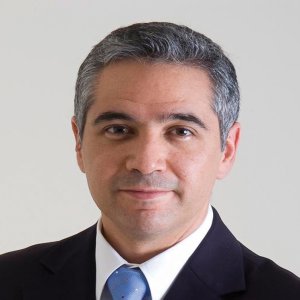Japanese Brake Suppliers Follow OEMS to Bajio

STORY INLINE POST
The Bajio region has seen an influx of investment by Japanese OEMs in the past few years, and their key suppliers have not been far behind. Akebono Brakes, a Japanese manufacturer of components for automobiles, motorbikes, trains, and industrial machinery recently opened a new production plant in Guanajuato. Keiji Yamanaka, President for Akebono Brakes Mexico, explained that the production plant was built entirely to serve Nissan, saying that the OEM has a very strong localization program in place, meaning the supplier needed to come to Mexico to support it and others. “Our customers are consistently moving operations overseas and we need to be there for them. Nissan, Mazda, and Honda are all expanding production, and as their supplier, we need to follow their movements,” says Yamanaka. He also confirms that although his company was driven by the need to service Nissan, producing in Mexico also fits in well with the company’s own globalization expansion strategy. Beyond Japan, the Mexican plant adds to the company’s two factories in China, four in the US, and others in Thailand, Indonesia, and Vietnam. “We are really happy with our location at the industrial park in Guanajuato. The infrastructure is excellent and all of our clients are nearby,” proclaims Yamanaka. Otscon, another Japanese brakes supplier, tells a similar story. Otscon recently established a plant in San Luis Potosi, and the company’s Plant Manager, Michael Serrage, explained that the company works for Toyota, Honda, Subaru, and Nissan in the US, while the Mexican plant was primarily established to provide parking brakes to Nissan. “Currently, our plant here has about 10% of the capacity of our US facility. But by 2015, we expect to also be working for Mazda, which is why our plant has a lot of room to grow. We will need to add shifts, employees, and equipment, so we planned the plant so that it would have the setup to double its capacity,” Serrage tells.
Establishing an expensive new plant in order to be near a major customer is not without its burdens, however, with most major investments taking up to five years to become profitable. Yamanaka explains that one of the difficulties Akebono Brakes has faced in Mexico is the cost of supplies and energy, which he sees as not competitive. Whilst Mexico is a strategic location to supply the US market, the company is still establishing exactly what role the plant will play. “Strategically, we need to think about what products we will make at our new factory in Guanajuato. At first, we will just assemble disk brakes but we will try to procure the materials needed from inside of Mexico. We need to do this to actually make a profit,” says Yamanaka. “Importing the entire material portfolio does not make economic sense, therefore Akebono Brakes will look to source more supplies domestically.” The company is particularly keen on finding steelmakers to create the drum brake and ancillary products, as well as casting, as these processes make up 85% of the brake pad. Otscon’s Serrage explains that meeting regulations presents another challenge when seeking new suppliers to produce an auto part as vital to safety as brakes. “Any change, no matter how minute, has to undergo rigorous studies to ensure that it results in equal or better quality than the previous model.” Otscon currently imports mainly from Japan and the US, but is trying to improve on its present 40% of locally sourced content. Describing the processes this requires, Serrage says that Otscon “is installing equipment right now to be able to make that transition. In order to pick a supplier, we have to conduct numerous audits and ensure they have the right certifications. If they pass these tests, they then have to go to our design department to provide prototypes for testing.”
Whether or not such Japanese Tier 1 suppliers will also bring technology development with them to Mexico remains to be seen. Akebono is well-known for its braking technology, evidenced by its partnership with McLaren, which fits its P1 with Akebono brakes. With OEMs increasingly trying to lighten their vehicles, Akebono is trying to offer more aluminum products and is currently exploring how to produce these more advanced products in Mexico. In terms of technology development, the company’s Mexican operations presently rely on its technology institute and development in Detroit. Like Akebono, Otscon is focusing on producing lighter components using materials such as aluminum, composite injection molding, and magnesium. However, Serrage reiterates Yamanaka’s viewpoint that many of these materials are currently prohibitively expensive to source them in North America.




















